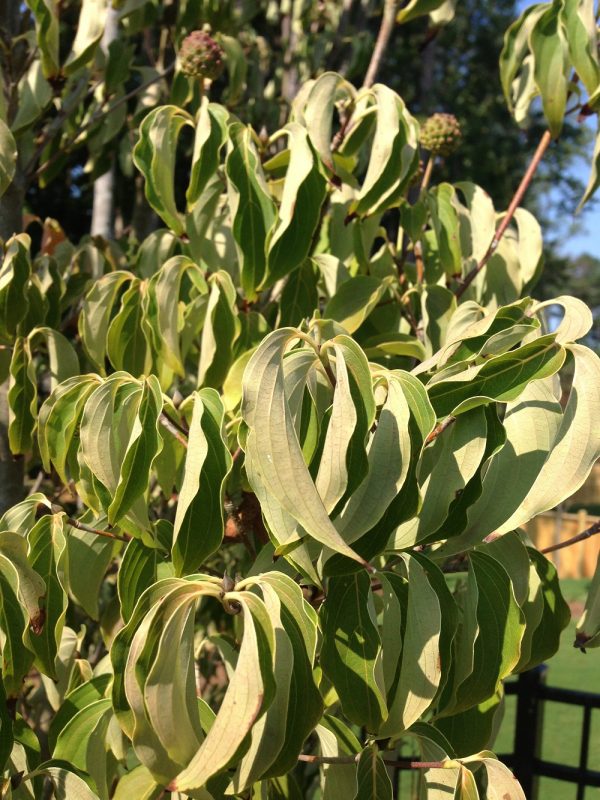Wolf Eye Kousa Dogwood
Are you looking for a beautiful and hardy addition to your garden? Look no further than the Wolf Eye Kousa Dogwood. This stunning tree has variegated leaves and attractive pink flowers that bloom in the late spring and summer. Not only is it aesthetically pleasing, but it is also resistant to most pests and diseases, making it a great choice for any gardener.
Pain Points
Is your garden plagued by pests and diseases that threaten the health of your plants? Do you struggle to find trees that can thrive in your local climate? The Wolf Eye Kousa Dogwood is a solution to both of these pain points. Its resistance to pests and diseases means that you don't have to worry about constant maintenance and potential losses, and its hardy nature means it can thrive in a variety of climates.
Target of Wolf Eye Kousa Dogwood
The target of Wolf Eye Kousa Dogwood is gardeners and landscapers looking for a beautiful, low-maintenance tree that can thrive in a variety of climates and resist pests and diseases.
Summary of Main Points
The Wolf Eye Kousa Dogwood is a stunning and hardy tree that is resistant to most pests and diseases. It is a great choice for any gardener looking for a low-maintenance addition to their garden.
Personal Experience with Wolf Eye Kousa Dogwood
I first discovered the Wolf Eye Kousa Dogwood while landscaping a client's yard. I was impressed by its variegated leaves and beautiful pink flowers. I recommended it to the client as a low-maintenance option that would add some color to their yard, and they were thrilled with the results. After seeing it flourish in their yard, I decided to plant one in my own garden, and it has quickly become one of my favorite trees. Its hardy nature means that I don't have to worry about it during the harsh winters in my area, and its beautiful blooms add some color to my yard during the summer.
Benefits of Wolf Eye Kousa Dogwood
The benefits of Wolf Eye Kousa Dogwood are many. Its resistance to pests and diseases means that it requires minimal maintenance, making it a great option for busy gardeners. Its hardy nature means that it can thrive in a variety of climates, making it an excellent option for gardeners all over the country. And, its beautiful variegated leaves and pink flowers make it a stunning addition to any garden.
Growing Conditions for Wolf Eye Kousa Dogwood
The Wolf Eye Kousa Dogwood prefers well-drained soil and full sun to partial shade. It can tolerate a variety of soil types and is relatively drought-tolerant once established. It is hardy in USDA zones 5-8.
Care for Wolf Eye Kousa Dogwood
The care for Wolf Eye Kousa Dogwood is minimal. It requires regular watering during its first year of growth to establish a strong root system, but once established it can tolerate periods of drought. It benefits from a layer of mulch around the base of the tree to retain moisture and control weeds. And, while it is resistant to most pests and diseases, it is susceptible to root rot if the soil is poorly drained.
Personal Experience with Maintaining Wolf Eye Kousa Dogwood
Maintaining my Wolf Eye Kousa Dogwood has been a breeze. I make sure to water it regularly during its first year to establish a strong root system, and I mulch around the base of the tree to retain moisture and control weeds. Other than that, I simply enjoy watching it grow and bloom each year.
Question and Answer
Q: Can the Wolf Eye Kousa Dogwood tolerate cold temperatures?
A: Yes, the Wolf Eye Kousa Dogwood is hardy in USDA zones 5-8 and can tolerate cold temperatures.
Q: Does the Wolf Eye Kousa Dogwood need to be pruned?
A: The Wolf Eye Kousa Dogwood does not require regular pruning. However, you can prune it in the late fall or winter to remove any dead or damaged branches.
Q: How often should I water my Wolf Eye Kousa Dogwood?
A: During its first year of growth, you should water your Wolf Eye Kousa Dogwood regularly to establish a strong root system. Once established, it can tolerate periods of drought and only requires watering during particularly dry periods.
Q: What are the pink flowers on the Wolf Eye Kousa Dogwood?
A: The pink flowers on the Wolf Eye Kousa Dogwood are actually bracts, which are modified leaves that surround the true flowers. They add beautiful color to the tree and bloom in late spring and summer.
Conclusion
The Wolf Eye Kousa Dogwood is a stunning and hardy tree that is resistant to most pests and diseases. It is a great choice for any gardener looking for a low-maintenance addition to their garden, and its attractive variegated leaves and pink flowers make it a beautiful addition to any landscape. Whether you're looking for a tree that can thrive in cold temperatures, resist pests and diseases, or simply add some color to your yard, the Wolf Eye Kousa Dogwood is a fantastic option.
Gallery
Kousa Dogwood – Wolf Eye | Walter Reeves: The Georgia Gardener

Photo Credit by: bing.com / dogwood kousa planted
How To Grow 'Wolf Eyes' Dogwood | Dogwood Trees, White Gardens, Garden

Photo Credit by: bing.com / dogwood trees wolf eyes tree kousa cornus garden flowering japanese chinese small dwarf landscaping beautiful plants varieties landscapes maple gardens
Cornus Kousa 'Wolf Eyes': The Kousa Dogwood , Wolf Eyes ,flowers In

Photo Credit by: bing.com / wolf kousa eyes dogwood cornus variegated garden center nursery hickory hollow flowering trees late flowers spring shade berry period weeks
Wolf Eyes Dogwood - Cornus Kousa 'Wolf Eyes' - Wholesale
Photo Credit by: bing.com / cornus wolf eyes kousa dogwood plants find wholesale
Cornus Kousa Wolf Eye Chinese Dogwood A Compact Variegated Kousa

Photo Credit by: bing.com / dogwood wolf kousa cornus eyes chinese eye variegated viburnumvalley 2009 show bloom 22nd november garden beds flower could